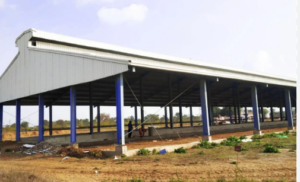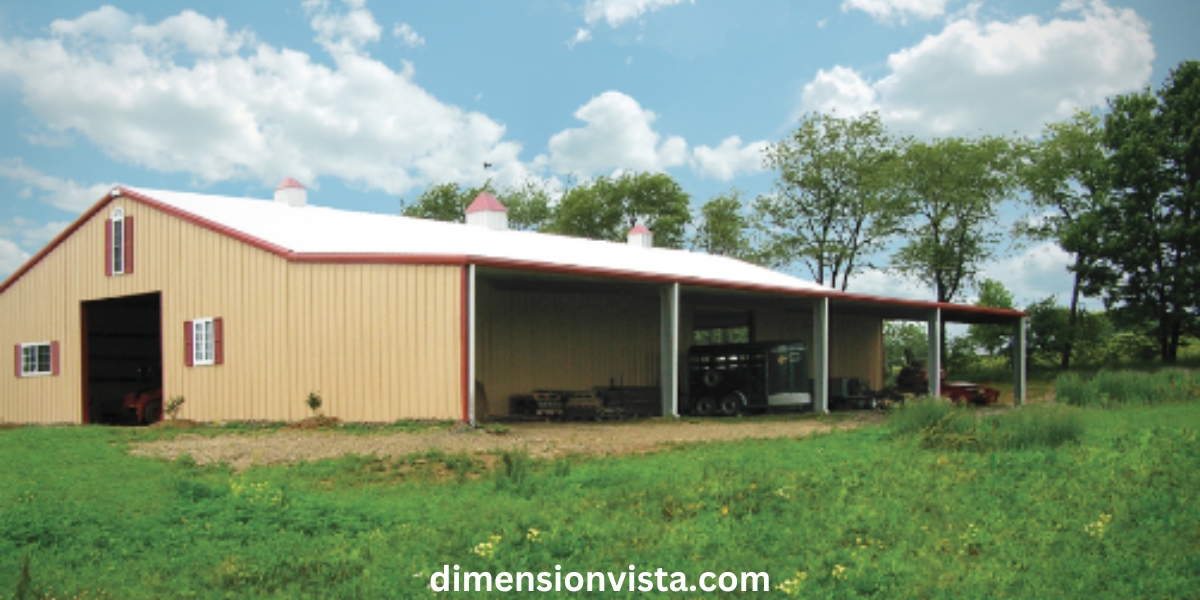Agricultural buildings are a vital part of farming operations, providing storage for equipment, shelter for animals, and space for crops. However, the upkeep of these structures often comes with significant expenses and maintenance headaches. This is where agricultural steel buildings stand out. Known for their strength, longevity, and low maintenance requirements, steel buildings are rapidly becoming the preferred choice for farmers and ranchers worldwide.
In this article, we’ll explore how agricultural steel buildings reduce maintenance costs, increase durability, and provide long-term value. Whether you’re looking to build a new structure or upgrade your current one, understanding these benefits can guide your decision-making process.
Why Choose Steel for Agricultural Buildings?

Steel has proven to be one of the most reliable materials for agricultural structures. Here are the main reasons why steel buildings are so popular:
- Strength and Durability: Steel is a high-strength material, able to withstand extreme weather conditions such as heavy snow, strong winds, and even earthquakes.
- Longevity: Steel buildings have an impressive lifespan compared to traditional wood or brick structures. With proper care, they can last decades with minimal deterioration.
- Low Maintenance: Unlike wood, steel does not rot, warp, or succumb to pests. This significantly reduces the need for constant repairs.
- Fire Resistance: Steel is inherently fire-resistant, which makes it an ideal choice for farms dealing with potential fire hazards, especially around hay storage or equipment.
By investing in steel buildings, agricultural businesses save money in the long run, both in terms of maintenance and operational efficiency.
Key Benefits of Agricultural Steel Buildings
1. Lower Maintenance Costs
One of the most compelling reasons for choosing steel buildings is the dramatic reduction in maintenance costs. Traditional wooden structures require regular upkeep, including painting, sealing, and pest control. Steel, on the other hand, is resistant to the following:
- Pests and Insects: Wood is susceptible to termites, rodents, and other insects that can cause severe damage over time. Steel does not attract pests, thus preventing costly repairs.
- Moisture Damage: Wood is prone to rot and mold, especially in areas with high humidity or significant rainfall. Steel is impervious to water damage, which helps maintain the integrity of the building’s frame.
- Weathering: Unlike materials like wood or concrete, steel resists the damaging effects of UV rays, rain, and extreme temperatures. This resistance reduces the frequency of repairs and maintenance tasks over the years.
By reducing these common maintenance issues, farmers can save substantial amounts of money in repairs and replacement materials.
2. Increased Durability and Lifespan
Steel buildings are incredibly durable, often outlasting traditional structures. Their resistance to weather elements, pests, and wear and tear means they can stand the test of time. Consider these statistics:
- Resistance to Extreme Weather: Steel buildings are designed to endure harsh conditions like heavy winds, snow loads, and even seismic activity. For instance, a steel barn can easily with stand wind speeds exceeding 100 mph without compromising the structure’s integrity.
- Corrosion Resistance: Modern steel buildings are treated with coatings such as galvanization or powder coating to prevent rust. This ensures that the metal remains sturdy and looks great for many years.
As a result, steel agricultural buildings can last for 50+ years with minimal maintenance, providing a long-term return on investment.
3. Energy Efficiency and Cost Savings
Agricultural buildings often house temperature-sensitive materials such as hay, grains, or live stock. Keeping these spaces at the optimal temperature can be costly, but steel buildings can help reduce energy consumption:
- Better Insulation: Steel buildings are often constructed with energy-efficient insulation materials. These help maintain internal temperatures, reducing the need for additional heating or cooling systems.
- Reflective Roofing: Steel roofs can be coated with reflective materials that reduce heat absorption, keeping buildings cooler in the summer months and reducing the need for air conditioning.
By investing in steel structures that promote energy efficiency, agricultural businesses can lower utility bills and reduce their overall operating costs.
Addressing Common Questions about Agricultural Steel Buildings
1. How Much Does a Steel Building Cost?
While the initial cost of a steel building may be higher than traditional materials, the long-term savings far outweigh the initial investment. For example, the durability and minimal maintenance of a steel building often mean fewer repairs, replacements, and labor costs over time. Depending on the size, features, and location, the cost of a steel building could range from $10,000 to $100,000 or more.
2. Are Steel Buildings Environmentally Friendly?
Steel is one of the most sustainable building materials available. It’s 100% recyclable, meaning that it can be reused at the end of its lifespan. Additionally, many steel buildings are constructed with environmentally friendly materials and energy-efficient designs, contributing to a smaller carbon foot print.
3. Can Steel Buildings Be Customized for Specific Agricultural Needs?
Absolutely. Steel buildings can be highly customized to suit different agricultural needs, whether it’s a barn, storage facility, greenhouse, or livestock shelter. Farmers can tailor the design to include features like ventilation systems, insulation, skylights, or large entryways for equipment.
4. Do Steel Buildings Require Specialized Contractors?
While steel buildings are relatively easy to assemble, it’s crucial to work with experienced contractors who specialize in steel construction. These professionals ensure that your building is structurally sound, up to code, and optimized for your specific needs.
Real-World Example: Steel Buildings in Action
Case Study 1: Steel Barns for Livestock
A farmer in Kansas switched from a traditional wooden barn to a steel structure for housing cattle. Over the course of five years, the farmer saved 30% on maintenance costs and reported no issues with pests, mold, or weather damage. The steel barn required only an occasional cleaning, while the old wooden barn would have needed painting, repairing of leaks, and pest control treatments.
Case Study 2: Steel Storage for Equipment
In Ontario, a farm upgraded its storage facility by replacing an old wooden structure with a steel building. The new facility provided much better insulation, keeping equipment in better condition throughout the year. The farmer noted that the energy savings on climate control were significant and that there was no longer any need to replace rotting wood or deal with rusting hinges.
Conclusion
Agricultural steel buildings are an excellent investment for farmers and ranchers looking to reduce maintenance costs and increase the durability of their structures. From lower long-term expenses to increased protection against the elements, pests, and wear-and-tear, steel buildings offer unmatched value for agricultural businesses. By opting for steel, you can protect your assets, save money, and focus more on your core operations.
If you’re considering an upgrade or new construction, steel could be the solution you’re looking for. Don’t hesitate to explore the possibilities and start planning your next agricultural building project with the confidence that steel offers lasting strength and minimal maintenance.

